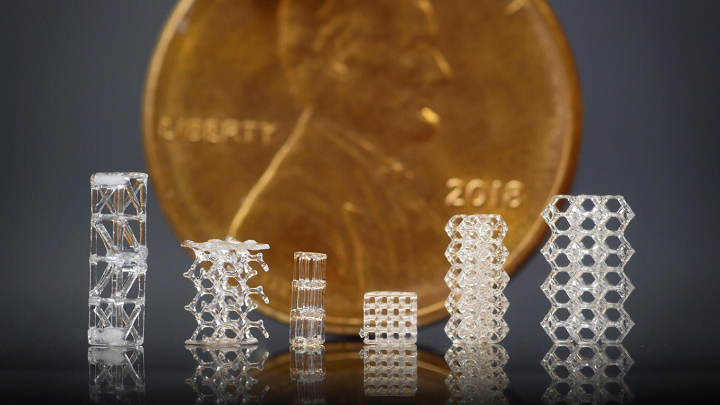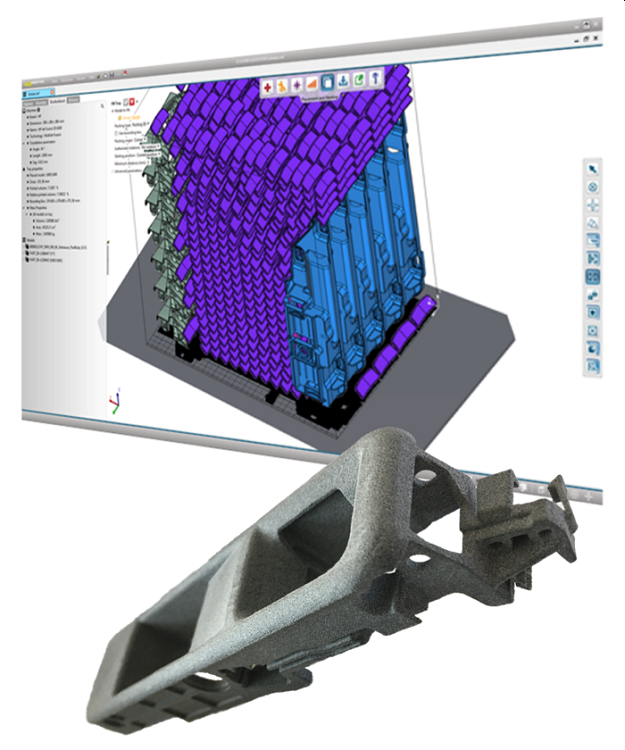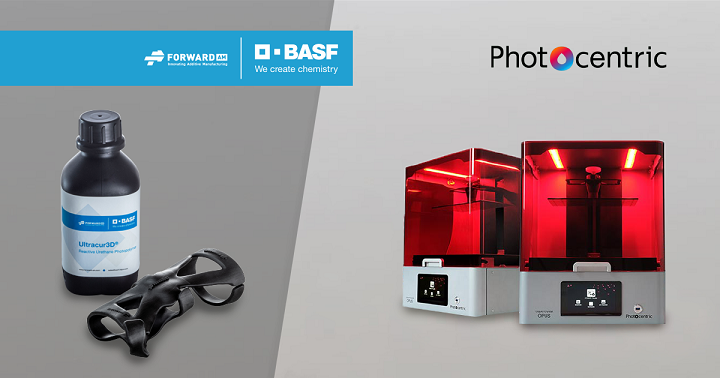We’re starting with an interesting new software function in today’s 3D Printing News Briefs, as CoreTechnologie’s 4D_Additive can now repair 3D scan data and STL files. Business is next, as Photocentric and BASF Forward AM have renewed their partnership, and a team of researchers from UC Berkeley and the University of Freiburg developed a new way to 3D print glass microstructures. Finally, if you’ve ever wanted a replica of the SpaceX Orbital Launch Integration Tower, you’ll want to check out this amazing 3D printed model!
Easy Repairs of STL Files and Scan Data
German-French software manufacturer CoreTechnologie recently introduced the latest version of its 3D printing software 4D_Additive, and it comes with a new function that can quickly repair and simplify tessellated files and turn them into closed solids, and reduce the number of triangles with losing accuracy. These features, called Marching Cube and Mesh Simplification, make it possible to automatically correct and simplify any type of triangulated 3D model, or scan data, and prepare it for printing. This saves users a lot of time, as manual repair can be a lengthy process.
The Marching Cube function in 4D_Additive 1.4 software combines voxelization of parts with their repair, so users can define the size of, and how fine, the cube is. Once voxelization (adaptive filling of the part volume with voxels) is complete, the software automatically generates a closed 3D mesh to repair files and data with thousands of triangulation defects. Users also have multiple options for intelligent triangle reduction. By using the new Marching Cube and Mesh Simplification functions, fast, simplified repair of STL files and scan data is enabled, so users can easily create 3D printable solids with a better file size and resolution.
Photocentric, Forward AM Renew Strategic Partnership
3D LCD printing inventor Photocentric and BASF Forward AM announced that they have renewed their strategic partnership, with the focus on a series of new AM materials produced by the two. Their collaboration began in 2018 with efforts to reimagine traditional manufacturing processes like injection molding by adding 3D printing to the mix for large component production. Since then, the two have already had success in developing the Ultracur3D® line of daylight photopolymer resins, which were designed to work with Photocentric’s LCD technology. Now, Photocentric and Forward AM will work to create and deliver the next generation of 3D printing materials for end-use parts. Additionally, their respective R&D teams will also work together on future projects focused on realizing the potential of additive manufacturing at scale.
“We are excited to be furthering our collaborative work with Photocentric. Our teams enjoy an excellent working relationship underpinned by our shared goals, including our collective desire to offer industry-disruptive solutions to unlock markets which have yet to reap the benefits from additive manufacturing,” said Dr. Piotr Bazula, Global Product and New Business Development Manager Liquid Formulation, BASF 3D Printing Solutions. “We look forward to working together to further enable end-use parts to be produced consistently and cost-effectively with 3D printing technologies.”
Researchers 3D Printing Glass Microstructures

3D printed glass lattices, displayed in front of a U.S. penny for scale. Image credit: Joseph Toombs
A collaborative team of researchers from UC Berkeley and the Albert Ludwig University of Freiburg published a study on their faster way to 3D print glass microstructures with higher strength, optical quality, and design flexibility. Three years ago, the UC Berkeley researchers developed computed axial lithography (CAL), which can print glass and fine features, and together with the Freiburg researchers, expanded the capabilities in a new system called micro-CAL. Instead of building objects up from layers, CAL uses a laser to project patterns of light into a rotating volume of light-sensitive material to print the whole glass object simultaneously; micro-CAL can print microscale features in glass structures. The Freiburg team created a resin with glass nanoparticles surrounded by a light-sensitive binder liquid, which is solidified by digital light projections. The printed object is then heated to remove the binder, and fuse the particles into a solid glass object with smoother surfaces and more strength. This could a major boon for manufacturers of microscopic optical components, which are used in advanced microscopes, compact cameras, and VR headsets.
“When we first published this method in 2019, CAL could print objects into polymers with features down to about a third of a millimeter in size. Now, with micro-CAL, we can print objects in polymers with features down to about 20 millionths of a meter, or about a quarter of a human hair’s breadth. And for the first time, we have shown how this method can print not only into polymers but also into glass, with features down to about 50 millionths of a meter,” said Hayden Taylor, principal investigator and professor of mechanical engineering at UC Berkeley.
“Glass objects tend to break more easily when they contain more flaws or cracks, or have a rough surface. CAL’s ability to make objects with smoother surfaces than other, layer-based 3D-printing processes is therefore a big potential advantage.”
3D Printed Replica of SpaceX Launch Tower
An Duong, the Founder and Director at Morethan3D Ltd, shared his latest 3D printing project in a LinkedIn post—the SpaceX Orbital Launch Integration Tower (OLIT). He explained that a few years ago, he designed and 3D printed a series of jet engine models, and has been looking for a new project that might “be as engaging and inspiring to the school kids,” and found it in the OLIT. The goal is to inspire young children to learn more about space, 3D printing, and other STEM subjects with a challenge to stack the Startship and Booster together in the least amount of time. The 3D printed replica is a 1/96 scale model, and you can download the STL files and print the OLIT yourself, or order the 3D printed, unassembled model, with pre-fitted magnets, directly from Morethan3D. Duong included print and assembly instructions for the OLIT model, for which you will need a printer with a minimum build volume of 216 x 200 x 178 mm.
“Ideally, it would be better if your build volume is greater than 322x228x178mm so you can print the largest single part of the model – the Chopstick_RH in one piece. Otherwise, you’ll need to print it in two pieces and glue them together. To see if your printer can handle this part or not, you can download it via this LINK.”
Subscribe to Our Email Newsletter
Stay up-to-date on all the latest news from the 3D printing industry and receive information and offers from third party vendors.
Print Services
Upload your 3D Models and get them printed quickly and efficiently.
You May Also Like
Consolidation in AM: How 2025 Is Shaping the Industry’s New Normal
The first half of 2025 has been marked by a clear shift in the additive manufacturing (AM) industry. Companies are no longer just focused on developing new tech by themselves....
Etsy Design Rule Change Reduces Selection of 3D Printed Goods
Online marketplace Etsy has implemented a rule change requiring all 3D printed goods on the site to be original designs. The update to the site’s Creativity Standards states, ¨Items produced using...
U.S. Congress Calls Out 3D Printing in Proposal for Commercial Reserve Manufacturing Network
Last week, the U.S. House of Representatives’ Appropriations Committee moved the FY 2026 defense bill forward to the House floor. Included in the legislation is a $131 million proposal for...
Transforming From Tourist to Native: Duro CEO Michael Corr Explains Why the Company Rebuilt its PLM Software on AI
In these early innings of the AI boom, many market analysts have expressed concern that AI spend has gotten too far ahead of the technology’s proven ability to deliver significant...



































